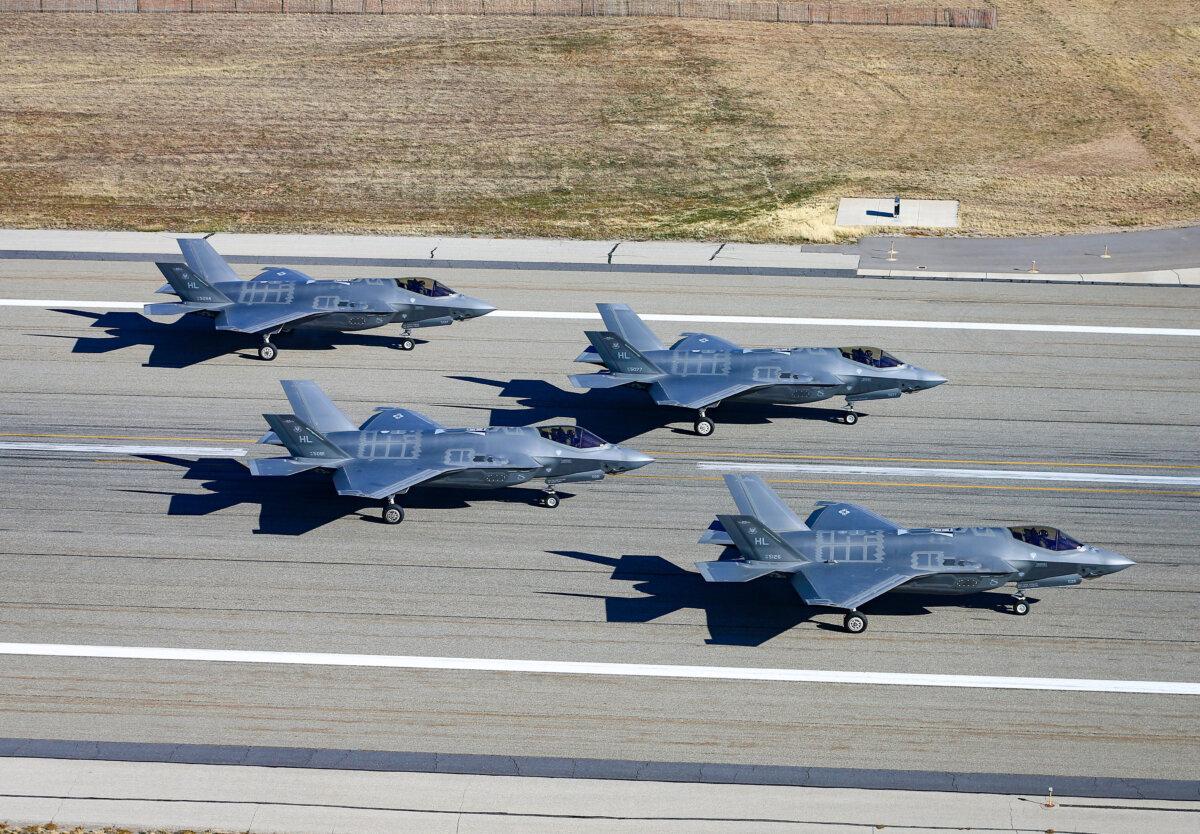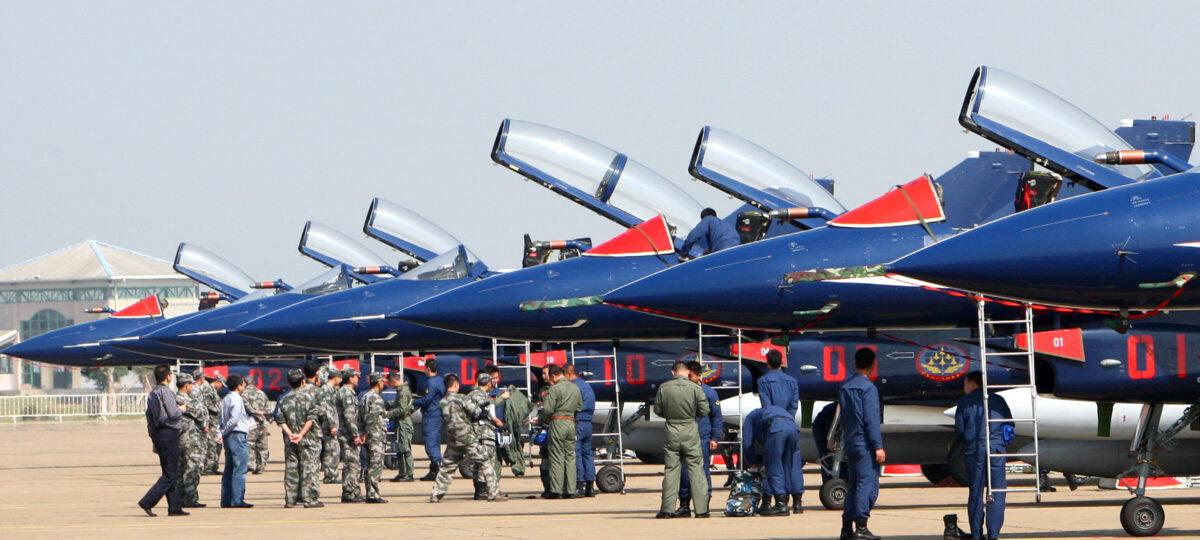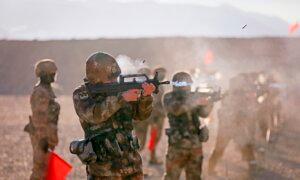Bipartisan critics say budget deal capping federal spending hikes at 1 percent can’t be sustained if Pentagon is to keep pace with China’s military spending.
That blanket restriction, however, is unlikely to survive as Senate and House appropriations and defense panels begin reviewing Department of Defense (DOD) budgets, especially with the Chinese Communist Party’s (CCP) March announcement that it was increasing military spending by 7.2 percent this year.
Those fiscal pressures surfaced on April 9 before the Senate Appropriations Committee’s Defense Subcommittee in bipartisan criticism of the U.S. Air Force’s proposed FY25 $188 billion budget, which calls for a 1.1 percent, or $2.4 billion, spending increase while trimming 129 aircraft from its inventory and dipping below 5,000 jets for the first time since its 1947 inception.
“The amount that’s in this budget—and I don’t care if we’re talking about Air Force, Army, Navy, Marines, it doesn’t matter—is inadequate,” Subcommittee Chair Jon Tester (D-Mont.) said. “It’s inadequate because there was a decision made [in July 2023] to put a 1 percent cap down [on all federal spending]. That was a bad decision.”
The Biden administration released its FY25 defense request on March 11. It earmarks $849.8 billion for DOD, with the remaining $45 billion primarily allocated to the Department of Energy (DOE) for the nation’s weapons programs.
The Senate Appropriations Defense Subcommittee’s April 9 hearing on the Air Force’s spending request and proposed FY25 $29.4 billion Space Force budget—a $600 million decline from FY24—is the first in a series of budgets that panels will review as the FY25 appropriations cycle kicks into gear.
In addition to Air Force and Space Force budgets, Senate Appropriations subcommittees on April 9 also got first glimpses of the U.S. Agency for International Development (US AID) FY25 spending plan. On April 10, Senate appropriators will review the Department of Homeland Security (DHS) and U.S. Forest Service (USFS) proposed FY25 budgets with the Navy’s FY25 request to go before the Defense Subcommittee on April 16.

During their 90-minute review, Mr. Rogers’ Senate colleagues robustly concurred.
“None of us can gloss over the fact that this budget request would result in a real decrease in funding available for the Air Force and Space Force to buy aircraft and weapons,” Sen. Susan Collins (R-Maine) said. “That’s true for the other military services as well. Just to keep pace with inflation for critical needs, like military pay, health care, and housing, the top line would need to be higher by at least 4 percent.”
Ms. Collins noted in the administration’s efforts to stay within the confines of the FRA, a top-line increase of less than 2 percent means the Air Force shaved $2 billion from its $29 billion in planned FY25 procurements, which would result in “a reduction of 129 aircraft” to a total force of 4,903 aircraft.
Air Force Secretary Frank Kendall agreed the spending plan does not reflect inflationary pressures, nor did the FY24 defense budget, also adopted under FRA caps,
“The enacted budget does not keep pace with inflation—or with the 7 percent publicly acknowledged growth of China’s military budget,” he said. “To stay within the levels of the FRA, the Air Force had to adjust our previous plans” by, among other things, trimming aircraft procurement.
Ms. Collins said funding shortfalls are not restricted to procurement. “For example, Air Force officials have said that, at any one time, 514 aircraft in the fleet are grounded due to lack of spare parts,” she said. “Funding for additional spares to reduce that deficiency significantly was excluded from the budget requests and instead has been included on those services unfunded requirements list.”
It’s alarming that as the U.S. Air Force gets smaller, the Chinese air force is growing rapidly, she said.
Under the budget request, the Air Force will divest 250 jets, which would bring the service to less than 5,000 aircraft, 54 fighter squadrons, and about 325,000 active duty.
“I remember an admiral saying to me my very first year in the Senate that ‘quantity has a quality all of its own,’” Ms. Collins said, adding under the Air Force’s five-year plan, “you’re seeking to divest more than 1,000 aircraft while procuring fewer than one aircraft for every two jets that are being retired. Are we at the point where we are risking an air force that is too small to accomplish the missions that it is assigned?”
“I would say that quantity does matter,” Air Force Chief of Staff Gen. David Allvin said, “but we want every one of that quantity to be survivable because if we have a large quantity, but they have a reduced chance of survival, then we’re actually putting more airmen in harm’s way and at higher risk if we can’t have them survive and be able to actually prevail.”
These decisions are up to Congress, he said, adding that American airmen “when asked, will fight in whatever cockpits we have.”
“I just want to make sure you have enough of those cockpits,” Collins said.

Existential Threat: Congressional Dysfunction
China’s military expansions and FRA restrictions aren’t the only challenges facing the Pentagon. Congressional disfunction is also posing what several committee members said is an existential threat to the nation’s security.
The House adopted the final four of 12 spending plans that constitute the annual federal budget on March 23, finally enacting the FY24 spending plan for a fiscal year that began Oct. 1.
The $883.7 billion FY24 defense budget, or National Defense Authorization Act (NDAA), was only adopted in December and enacted in late March with the rest of the FY24 plan, a nearly six-month delay in implementing appropriations for FY24-specific programs.
“The six-month delay has had a real impact in that time cannot be recovered. But at least we can now move forward with urgent modernization priorities,” Mr. Kendall said. “Time is my greatest concern. We are in a race for military technological superiority with a capable pacing challenge. Our cushion is gone. We are out of time.”
“At last year’s Department of Air Force hearing, I stressed the importance of getting that budget on time,” Mr. Tester said. “We failed, but we don’t need to fail this year. We need to get it done, and get it done by the end of September. The fact of the matter is our airmen and guardians deserve better, and we can do better.”
Mr. Tester said the 1 percent FRA cap has to go, especially in the face of “the most dangerous time in the world since the early 1960s.
It may be later than many Americans think, Mr. Kendall warned.
“The United States is facing a competitor with national purchasing power that exceeds our own—a challenge we have never faced in modern times,” he said. “China is actively developing and expanding capabilities to challenge strategic stability, attack our critical space systems, and defeat our ability to project power, especially airpower. Conflict is not inevitable, but it could happen at any time.”
“Time is not on our side,” Gen. Allvin agreed. “The FY25 Air Force budget request reflects difficult choices. We’ve made trade-offs to keep the Air Force’s operational readiness today at the minimal acceptable to meet the nation’s demands while seeking to preserve the previous year’s advances and modernization.”
Original News Source Link – Epoch Times
Running For Office? Conservative Campaign Consulting – Election Day Strategies!


